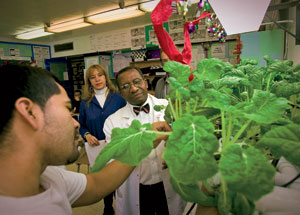 Welcome to “Evidence-Based Living” – the Cornell Cooperative Extension forum that looks at how research evidence can be applied to human problems. Cooperative Extension was founded in New York nearly a hundred years ago on a simple, but profound principle: That science can improve the lives of citizens of all ages. This blog will look at how Cooperative Extension uses research, informs the public about scientific findings, and helps bring knowledge to bear on real-world problems. We hope you will visit frequently, offer comments, and start lively dialogues. Some of our posts will look specifically at extension programs and resources, and others will examine how research can enrich outreach work.
Welcome to “Evidence-Based Living” – the Cornell Cooperative Extension forum that looks at how research evidence can be applied to human problems. Cooperative Extension was founded in New York nearly a hundred years ago on a simple, but profound principle: That science can improve the lives of citizens of all ages. This blog will look at how Cooperative Extension uses research, informs the public about scientific findings, and helps bring knowledge to bear on real-world problems. We hope you will visit frequently, offer comments, and start lively dialogues. Some of our posts will look specifically at extension programs and resources, and others will examine how research can enrich outreach work.
You can read more about who we are by clicking here.
Please give us your feedback!




